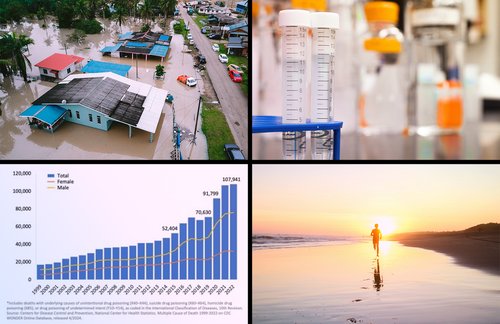
Let’s begin this lesson by understanding the challenges it takes to distill complex scientific topics, and then ultimately translate them into digestible bite-size video stories. These stories should reflect how scientists have to frame their findings for various audiences and really look at how students have to consider their audience and critically in different perspectives, understand different knowledge levels and needs by zeroing in on communication goals. Students don’t just learn how to explain science, they ultimately take on the role of being science communicators and really recognize through their lives and work the power of the voice they have in STEM Fields.
Students will learn:
Things for students to think about when setting goals
Activity
For this lesson, each student should use these Identify Your Audience Worksheet 1 and Identify Your Audience Worksheet 2 to understand how to identify the primary audience for their topic. Ask your students to think about age, location, background, interest, and motivations for their target audiences.
After students have completed their worksheets, ask them to form small groups and discuss their strategies for identifying their audiences.
Prejudice in favor of or against one thing, person, or group compared with another, usually in a way considered to be unfair.
A group of people who live in the same area (such as a city, town, or neighborhood). It can also be a group of people who have the same interests, religion, race, etc.
Awareness of the elements of environment through physical sensation or intuitive cognition. A capacity for comprehension and understanding.
People are attracted to information that helps them make good decisions. If you like music, you find musician interviews relevant. If you’re looking for a job, the business news is relevant. We need to depend on relevant information that helps us make decisions.
The people who read, watch and consume news. Often, journalists think about audience and newsworthiness in similar ways. How will the news story serve their local or national audience? Who am I writing the story for and why?
A document with transcribed (written-out) soundbites and voiceover narration. A VIDEO script is a two-column document with the audio (soundbites and voice over) in the right-hand column and a description of what the audience sees (visuals) in the left-hand column.
When violence strikes or when people argue about actions, events, ideas or policies, we care. Conflict and controversy attract our attention by highlighting problems or differences within the community or between groups. Sometimes conflict can be subtle and manifest as tension.
The term “empathy” is used to describe a wide range of experiences. A generally definition is the ability to sense other people’s emotions, coupled with the ability to imagine what someone else might be thinking or feeling. In media-making, creators can have empathy for their subjects and the audience can empathize with the characters.
Something that is known or proved to be true.
An investigation into and study of sources in order to establish facts and reach new conclusions.
A source is an individual, company, document or more that can provide information to fuel a new story. In order for a story to be considered verified and to maintain a reputation as a news outlet, it is important to have a credible source.
An attempt to grab the reader or viewer’s attention with interesting information that will keep them reading or watching.
After someone reviews your work, it is good practice to receive feedback, or an evaluation of your work based on certain standards. Feedback from multiple perspectives is an important part of the process. Masterpieces are rarely created in isolation.
A desire to learn and know about something or anything.
Determine the kinds of sources that will be helpful in answering compelling and supporting questions, taking into consideration multiple points of view represented in the sources, the types of sources available, and the potential uses of the sources. (NCSS D1.5.9-12)
Explain points of agreement and disagreement experts have about interpretations and applications of disciplinary concepts and ideas associated with a supporting question and explain how supporting questions contribute to an inquiry and how, through engaging source work, new compelling and supporting questions emerge. (NCSS D1.3.9-12 - D1.4.9-12)
Students communicate clearly and express themselves creatively for a variety of purposes using the platforms, tools, styles, formats and digital media appropriate to their goals. (ISTE)
Journalism
Video Production
Media Literacy
Science
Education
Digital Literacy/Citizenship
STEM
Beginner
Mic
Post It Notes
White board, chalkboard or other visual board
Markers
Computers
Projector
Camera or Mobile Phone
Internet
Video Conference Software. IE: Zoom or Google Meet
Online Worksheet
Padlet, Jamboard or other app for group collaboration
Notebook
2-3 Weeks